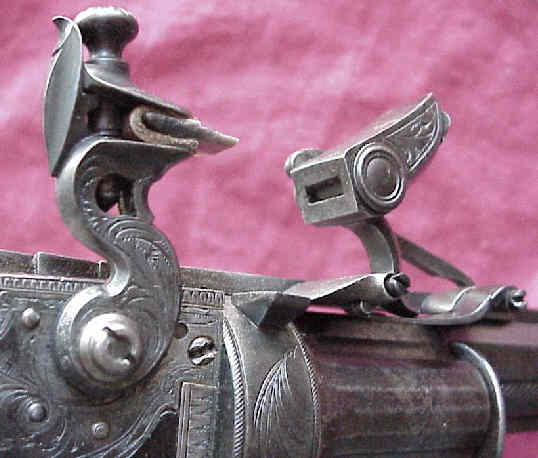Larks
40 Cal
and possibly help me to read and understand any identifiers and learn more about this pistol? (An incredibly thoughtful and generous birthday gift from my wife  )
)
All that I understand (or think that I understand) at this stage is that the barrel stamp is a London “Viewers” mark and that, based on the lock and ornamentation, it possibly dates anywhere from 1730’s to 1790’s........or later......???
My measurement of the bore suggests that it is .62 caliber (just under 16mm), length overall is 372mm and barrel length is 217mm.
It’s difficult to get one clear picture of the name engraved on the lock but I’m hoping it may jump out immediately to a more experienced eye:



All that I understand (or think that I understand) at this stage is that the barrel stamp is a London “Viewers” mark and that, based on the lock and ornamentation, it possibly dates anywhere from 1730’s to 1790’s........or later......???
My measurement of the bore suggests that it is .62 caliber (just under 16mm), length overall is 372mm and barrel length is 217mm.
It’s difficult to get one clear picture of the name engraved on the lock but I’m hoping it may jump out immediately to a more experienced eye:



Last edited:





























